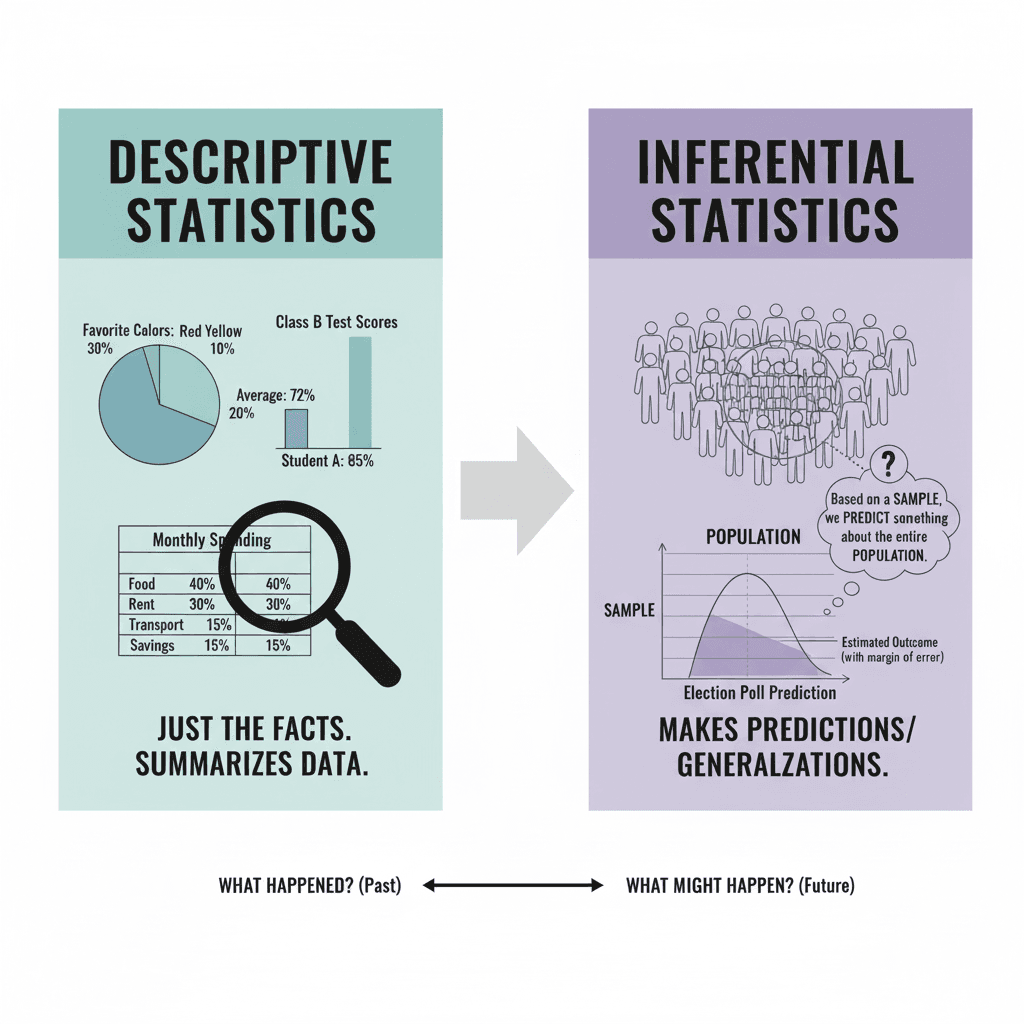When people talk about “data analysis,” they often imagine one big thing, but the truth is there are different flavors of analysis, each with its own purpose. Businesses don’t just look at data once and say, “Cool, we’re done.” Nope — they look at it from different angles depending on what they want to figure out.
In simple terms, there are five main types: text, statistical, diagnostic, predictive, and prescriptive. Let’s walk through them one by one, with real-world examples so it’s not just jargon.
1. Text Analysis
This one’s also called data mining. Basically, it’s digging through a pile of unstructured information (like emails, reviews, comments) and pulling out patterns that actually make sense.
Think about Amazon reviews. Thousands of people might leave comments, but no human has time to read them all. Text analysis tools can scan those reviews and say, “Hey, most people complain about delivery time” or “Everyone seems to love the packaging.”
It started out as a way to just turn messy raw text into usable insights, but today it’s super important for strategy — like shaping product design, customer service, or even brand positioning.
2. Statistical Analysis
Here’s where things get a little more number-heavy. Statistical analysis answers the question: “What happened?”
Two common approaches here:
- Descriptive Analysis – Looks at the whole dataset (or a chunk of it) and tells you averages, percentages, and distributions. For example: “40% of customers buy during sales.”
- Inferential Analysis – Instead of using all the data, it takes a sample and makes conclusions about the bigger set. Like a political poll — you don’t ask every voter, but a smaller group tells you what might happen.
The catch? Results from inferential analysis can vary depending on which sample you pick. That’s why businesses sometimes combine both descriptive and inferential to be safer.
3. Diagnostic Analysis
Okay, so statistical tells you what happened. Diagnostic digs deeper: “Why did it happen?”
Example: Sales dropped 15% last month. That’s the “what.” But why? Maybe a competitor launched a new product. Maybe your supply chain had delays. Diagnostic analysis looks for those root causes by spotting patterns and trends.
It’s like when you feel sick — you don’t just stop at “I have a fever.” You (or your doctor) ask why the fever happened. Same logic here.
4. Predictive Analysis
This one looks ahead. It asks: “What’s likely to happen next?”
Predictive analysis uses past data to make forecasts. For instance, if you bought two dresses last year and your salary doubled, a prediction might say you’ll buy four this year. But of course, other factors come into play — prices might rise, your style might change, or you might spend more on travel instead.
Companies use predictive analysis in tons of ways: credit scoring in banks, sales forecasting in retail, or even Netflix recommending shows you might like.
5. Prescriptive Analysis
This is the “all-in-one” method. Instead of just saying what happened (statistical), why it happened (diagnostic), or what might happen (predictive), prescriptive analysis tells you: “Here’s the best thing to do about it.”
It mixes insights from the earlier methods and suggests actions. Think of it as the GPS of business decisions. Not just showing the traffic (descriptive) or predicting delays (predictive), but telling you which route to take right now.
Many businesses love this type because it turns analysis into something directly useful.
Wrapping It Up
So, to recap:
- Text analysis → finding meaning in words.
- Statistical → what happened.
- Diagnostic → why it happened.
- Predictive → what’s likely to happen.
- Prescriptive → what should we do now.
Every business uses some mix of these depending on the situation. Some stick to descriptive because it’s simpler, while others go full prescriptive with AI and machine learning.




